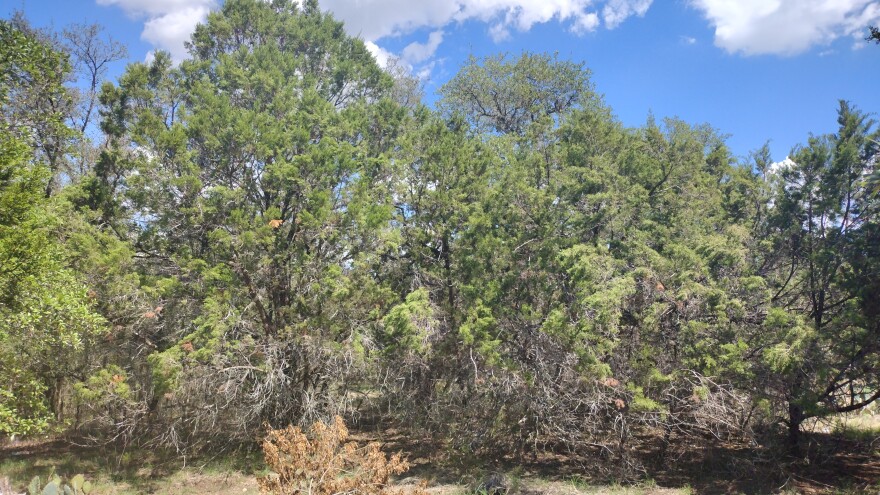Get TPR's best stories of the day and a jump start to the weekend with the 321 Newsletter — straight to your inbox every day. Sign up for it here.
If you have watery eyes, a runny nose, and have started to cough and sneeze this holiday season, it may not be COVID or the flu. It could be something less sinister but very miserable for some: "cedar fever."
Cedar fever is the name given to the allergic reaction among San Antonians that is caused by cedar pollen blowing into the city from the Hill Country.
Cedar pollen is typically at its worst from December until February, according to experts.
David Rodriguez, the horticulturalist with the Texas A&M Agrilife Extension Service in San Antonio, said it appears cedar fever season has started early this year.
"Everything seems to be starting a month earlier this year, particularly with the heat," he said.
Rodriguez added the heat has left behind dried out male pollen sacs on Hill Country juniper trees. Pollen from those sacs is released into the wind by each passing, blustery cold front.
The spiky cedar pollen is perfectly equipped to stubbornly cling to the lining of mucous membranes causing allergic reactions. When pollen counts are extremely high, it can be an irritant even to those without allergies.
Rodriguez said it's a good idea for allergy sufferers to stay indoors on clear and windy days when cedar pollen is at its worst.



